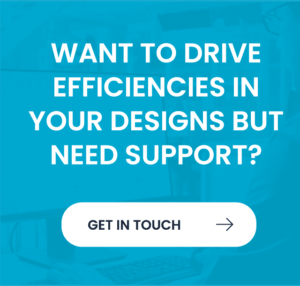The process of PCB design and manufacture of printed circuit boards is a complicated and extensive process and it’s sometimes easy to forget the variety of tasks that are completed as a result. In this blog we take you through the core stages that our PCB designers undertake and the tasks associated and talk through some of the challenges they encounter as a result.
Stage 1 – Feasibility and evaluation
First we must consider the mechanical housing versus SCH circuit area study and establish how much board space is needed to optimally place and route the circuit. Establishing density and working out how many routing layers might be necessary is also crucial at this stage. Here we can sometimes have a trade-off; depending on circuit density it can be possible to route a board on fewer layers but it will take longer. Then we need to consider whether that fits in with the product launch or is that something that can be revisited for cost down / product development in the future.
The next stage is to establish PCB fabricator Design Rules & limitations. We can only really communicate with the PCB fabrication team for their recommendations when we’ve done our own assessment on what we think the product will need.
The designer will then establish PCB assemblers design rules & limitations and identify critical circuits and power mapping. These will determine component distribution at placement.
Not got time to read this blog now?
Fill in the form below and we can send you this blog and others like it.
Stage 2 – Component Placement/Floor planning
At this point, we begin to place critical components. i.e Core processors, interconnects that interface with other boards/products & any other ancillary mechanical features and then we review. Regular reviews are continuous throughout the design phase and the interaction with the Mechanical team is critical. Working with the responsible engineer(s), we then establish exact routing requirements, current, high speed and impedance matching etc.
Stage 3 – Prioritise layout order / divide design
At this point we need to establish which circuits need routing first, such as any that are subject to lengthy approval processes. Starting with these, a sample board of that circuit can be made and qualified whilst the remainder of the design continues. Depending on your software functionality it might be possible to divide the design into sections and have multiple designers working on separate areas in parallel, in effect, saving time. After placement and prior to routing is the best time to do this.
Stage 4 – Routing
The routing of the board requires evaluation with all responsible engineers to ensure the timely inclusion of findings from any circuit simulation/circuit changes. This includes providing copper shapes to high current circuits and ground planes for return current paths. The frequency of via stitching or reinforcement between duplicate copper shapes depends on the circuit requirements and material stack up balance. Some consideration to thermal balance needs to also be applied because too many copper connections over multiple layers on the same hole can inhibit the soldering process
Stage 5 – Design Rule Checks
We are now at the stage where we carry out a routing completion check is done, often run throughout the routing phase. A DRC element to element check and a 3D mechanical alignment check are also performed to ensure the layout not only satisfies the design rules but is mechanically compliant.
Stage 6 – PCB Design Simulation and Partner review
Having already prioritised the routing order in the previous stage based on our product and our project plan then typical stages of the PCB design could include:
- High speed and impedance matched tracks that might require a clean path from A to B should probably be a high priority.
- Power distribution: If your component placement stage (stage 2) has any flaws then you need to know soon so make a start on the power distribution, don’t leave it until the end. Have you created a bottle neck?
- Routing of small signals, analogue and digital.
- Other routing tasks will also include adding large copper shapes for high current rails, ground return paths and via stitching.
- Test point allocation.
All of the above can intermingle and are often concurrent/parallel tasks. An experienced designer will have a good feel for the priority based on the placement stage but one tip often overlooked is as simple as asking the design team if they are aware of any pending changes. There may be a significant design change in the pipeline that the design team are working on which would mean time spent routing that particular area would be wasted effort.
Stage 7 – PCB Design Output / Finalisation
At this stage final checks and evaluations take place. DRC checks are repeated, all required outputs are processed, the information is distributed to all relevant recipients and the design is locked down as ‘released.’
Stage 8 – Incoming Engineering Queries
Hopefully by pre-releasing data to the PCB fabricator any engineering queries that might delay production will have been eliminated. However, if there is a query that does require design intervention then the severity needs assessing with management. It might be necessary to step back to Simulation & review stage.
Stage 9 – PCB Design Prototypes
This is when the first prototypes are built and tested. Any information from PCB fabrication or product assembly that could cause process issues should be fed back to the designer asap. Depending on your product development strategy its common to start the next iteration of a PCB immediately after the release of the first prototype and because many issues don’t present themselves until late in the testing stage, PCB designers can be under a lot of pressure to incorporate last-minute changes and hit deliverable time frames. This is when good change, review, release methodology needs to be applied.
For more information about PCB design and potential outsourcing for your next job, contact or 01254 301 888
For more information please contact us today!




